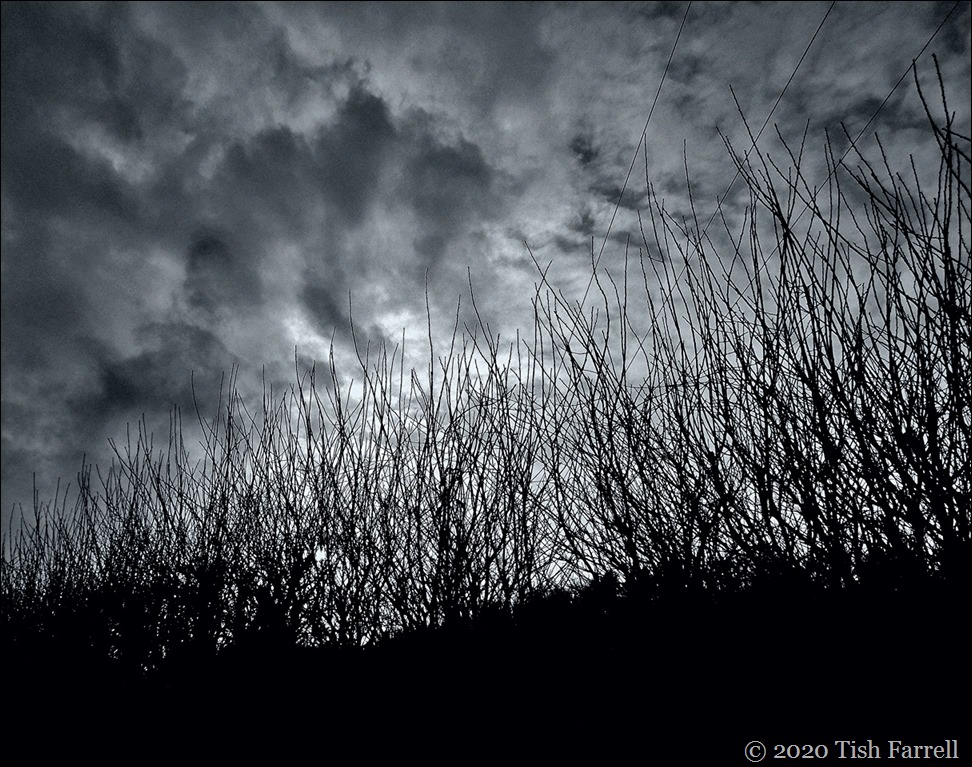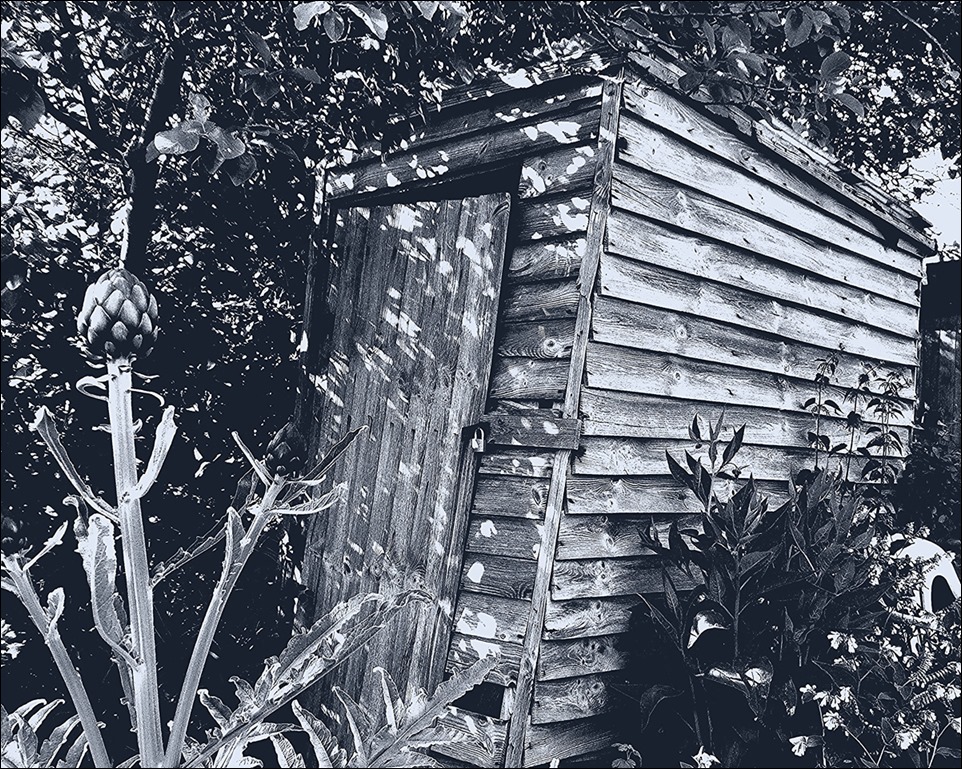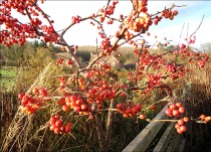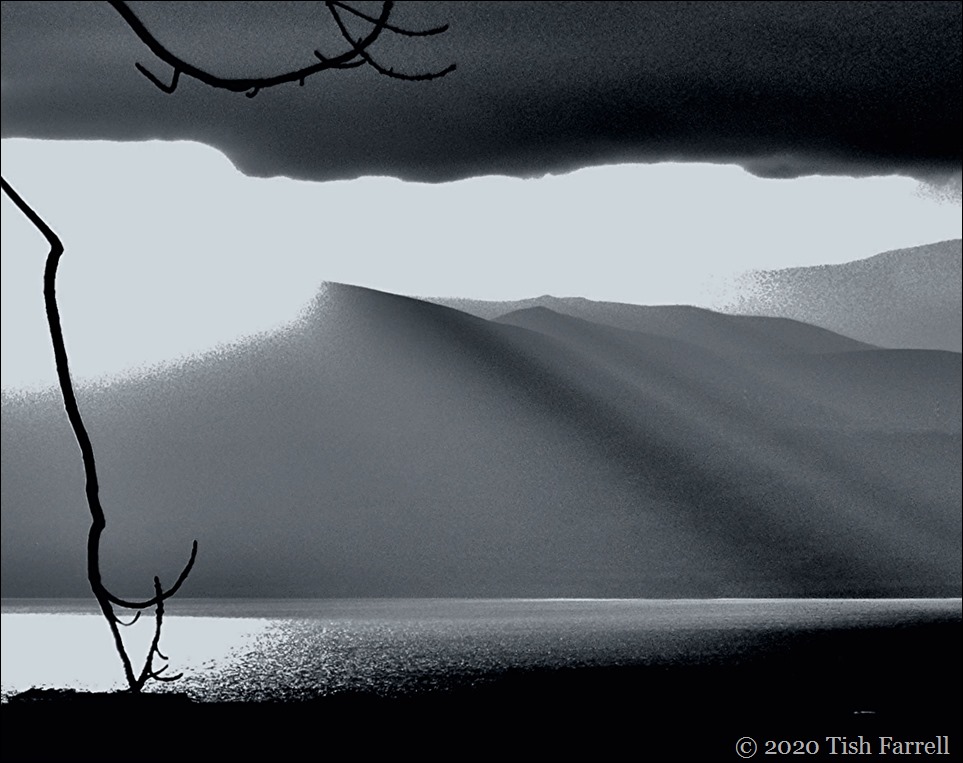
When I set off across the field to my allotment garden I often do have a camera tucked in my pants’ pocket. And yes I know very well this is no way to treat a camera. But then the inclination to take photos overtakes the scruples. There is so much to see and consider, both around the allotment plots and along the field path from our house – the different times of day (or night); the changing seasons; the shifts of light; the state of the land; what is growing; what is not.
This month Jude at Travel Words is featuring black and white photography in her 2020 Photo Challenge. And as I’m presently in monochrome mode and most days still going gardening, I thought I’d post a somewhat themed response to this week’s assignment, ‘a retrospective’ using archive shots.
This is what Jude says about the assignment:
‘Look for shadows and textures. Carefully choose your images so that you can angle the light to create a sense of depth with the shadows’.

Much Wenlock’s Southfield Road allotment plots back on to this field. It’s an adjunct to Townsend Meadow, the field behind our house. I’m guessing this photo was taken in October, though only because the ground looks newly ploughed, but not yet harrowed and re-sown, which is the farmer’s usual habit. I certainly don’t remember him missing a chance to put in some over-wintering crop, wheat or oilseed rape or field beans. On the other hand the ash trees are very bare and the hedgerows very spiky for early autumn. The light, too, and the dead grasses along the barbed wire fence also suggest winter. Even the glint of turned earth says ‘cold’.
Here’s that distant same spiky hedge, but a late afternoon view taken from the Townsend Meadow side:

*

This is the field path running up beside the allotment hedge, also a wintery view from a couple of years ago. Much of this grassy margin has been ploughed up now and is presently sprouting winter wheat. The next photo is the path closer to our house, in early summer with the Queen Ann’s Lace going full throttle.

*
English allotments tend towards the shambolic – lots of recycled greenhouses, makeshift sheds, cold frames, and windswept polytunnels. They can look very bleak in the winter months, or in the case of the next shot, disturbingly other worldly. It was taken at dusk when the greenhouses seemed to be capturing the last of the light in a distinctly sci-fi manner. The eerily lit straggle of dead tomato plants caught my eye.



This was the shed I inherited from several previous owners when I acquired my first allotment plot. That was back in 2007. (Goodness how time flies when you’re digging and composting.) Heaven knows how old it was, but never mind. Before I moved to another plot some years later, it served me well despite its tendency to lean to the east and harbour roosting snails.
There had of course been moments when he who builds new sheds from scratch and lives in my house was called in for emergency resuscitation measures i.e. when the leaning reached critical declivity and demanded a hauling back to as near vertical as was humanly possible; a manoeuvre that took our combined effort. One day I found a 1725 halfpenny just in front of the door. Astonishingly it was barely covered by soil, and in a spot I had walked over hundreds of times. I wondered who had dropped it there long ago. Had the old path from the Sytche across Townsend Meadow (now only visible on antique maps) passed under my shed? And who had dropped it and later sorely missed it? A lass on an errand to fetch a jug of ale? A ploughman dropping it from his pocket while reaching for his tobacco?
The shed was also picturesquely sheltered by a very old greengage tree, the light through its foliage making the sunspots you can see on the door. It was more of a copse of several trunks than a single tree. Fruit production was sporadic, but once it a while it produced the most delicious plums ever invented if only you could get to eat them before the wasps did.
These days the shed is no more. For several years it lay abandoned. Then last winter the new plot holder demolished it, along with most of the tree. By then the shed truly was on its last legs, but the same can’t be said of the tree. Now only one spindly trunk remains after fellow allotmenteers objected and stopped the final act of culling. I still think of the tree that was. The creamy spring blossom was spectacularly lovely, the scent so delicate.
But enough reminiscing. We have the tree’s offspring over the hedge at home. I dug up a seedling tree a few years ago and planted it there. It’s already four metres tall and grew four greengages this year, none of which we sampled as they were difficult to reach, though we were very happy to see them.

A home-from-the-allotment shot: the ash tree at the top of Townsend Meadow caught with the sun about to slip off the edge of Wenlock Edge.
copyright 2020 Tish Farrell
ABOUT TISH FARRELL
2020 Photo Challenge


























































